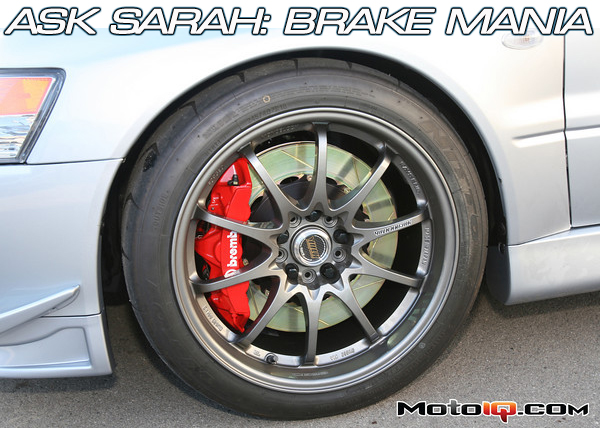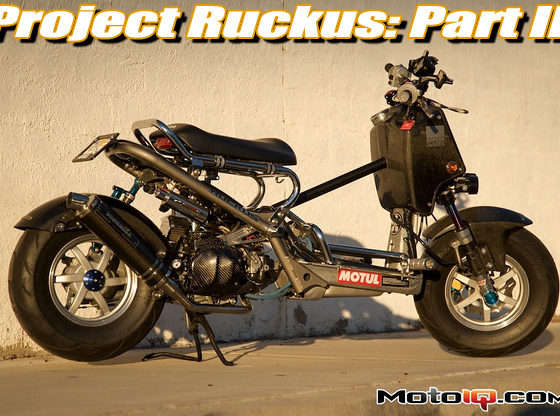
Got a Tech Question? Email Sarah at asksarah@motoiq.com
Since I get so many questions about brake issues, I’m dedicating this column to Brake-mania! But first I must address a common forum pet peeve of mine, the “brakes” versus “breaks” issue. The “breaks” are the highs and lows of life; your “brakes” are those things that stop your car! You “break” the “brakes”, got it? Good, so now let’s answer these brake questions. Hopefully it’ll keep somebody’s car from becoming acquainted with my rear bumper!
-Sarah
I have a '99 Infiniti G20 that seems to always be warping the brake rotors. How can I check to see if the calipers are seized or are getting close to seizing? The rears always seem to be the first to start warping, followed by the fronts.
Kenny
The front brakes handle about 80% of your total braking power so if you seem to be warping your rears first, start by checking the parking brake. The e-brakes on these cars tend to stick easily. Check the adjustment to make sure the brake isn't constantly dragging. An adjuster nut is located where the parking brake attaches to the cable under the center console arm rest. You can control how tight the parking brake is being applied by tightening or loosening this nut. Inspect the parking brake cables to see if they are seized. Check out your rear brake pads to see if they are leaving any friction pad material deposits on the surface of the rotor. Deposits that are unevenly distributed or varying thicknesses can create hot spots at higher temperatures. Poor quality pads overheat more quickly and leave behind a greater number of deposits, often mistaken as warped rotors.
To check if the caliper piston is seized, open the caliper bleeder screw. If the caliper piston doesn’t back off the rotor, the piston is probably seized. If the piston dust boot is cracked, torn or missing, that is also an indication that the piston could be seized as well. If only one side has a frozen piston, the car may pull to one side, the brake pad will probably be more worn down, and the rotor may be pitted or grooved. A seized caliper piston is usually the result of contaminated brake fluid or rust. Brake fluid is hygroscopic, meaning it absorbs water. Once atmospheric moisture makes its way into the brake system it settles at the lowest point- typically the calipers- and can rust the insides. Bleed your brake fluid periodically to purge air out of the lines. This will keep you from needing to replace brake components as often.
 |
| Check your suspect calipers for leaks, stuck pistons, rusted or bent slider pins and mis adjusted e-brake parts |
Finally on cars with floating calipers (which is most cars that don’t have racing style calipers) check for bent and corroded slider pins. If the dust boots on the slider pins are torn or missing the pins are probably corroded. If the pins are bent or rusty, they will cause the caliper to stick and drag causing overheating and warping as well as uneven brake action.
 |
| Since atmospheric water has a lower boiling point, brake fluid that has absorbed condensation can also contribute to fluid fade. Fluid fade occurs when the brake fluid next to the caliper piston starts to boil, transforming the fluid from a non-compressible liquid to a compressible gas. The gas can compress causing a soft, spongy brake pedal |



